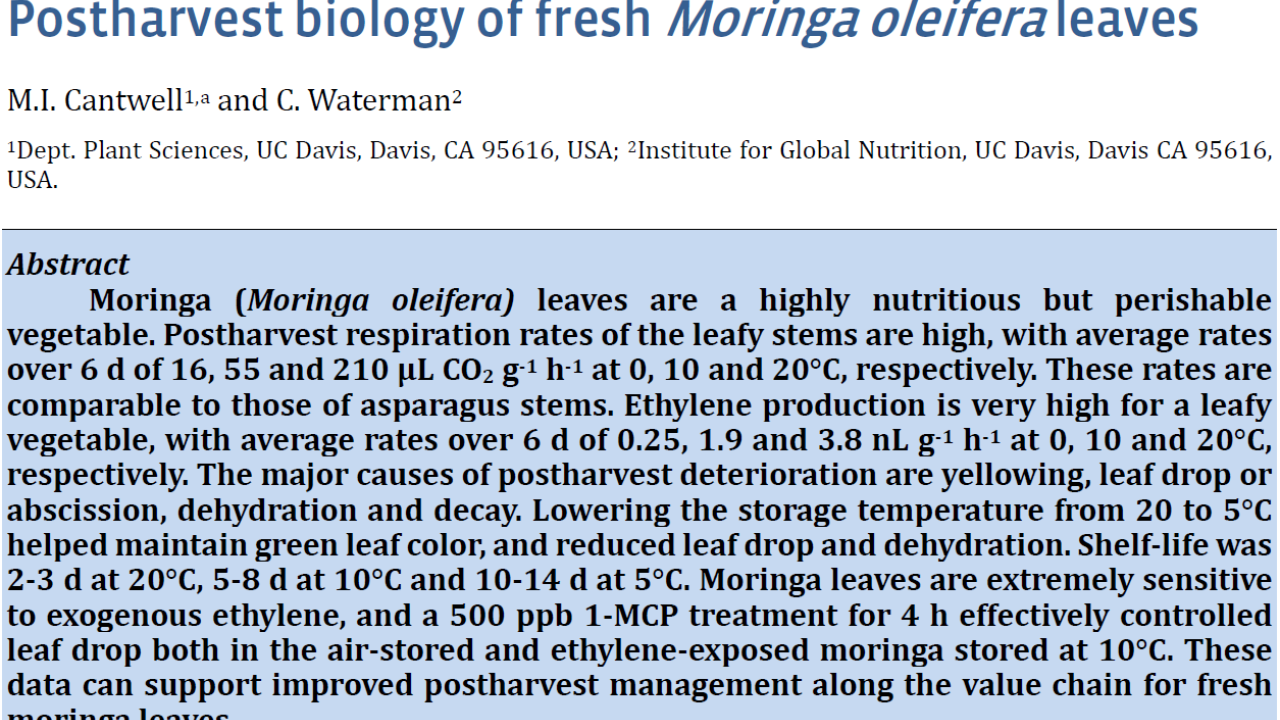
Moringa (Moringa oleifera) is a pantropic tree of broad adaptability and multiple uses that produces nutritious and edible leaves, flowers, and pods (Ebert and Palada, 2017). Leaves (rachises with paired pinnules) of moringa, a botanical relative of cruciferous vegetables, contain glucosinolates and isothiocyanates which contribute to one aspect of their reported medicinal value (Waterman et al., 2014; Gopalakrishnan et al., 2016; Fahey, 2017). The leaves contain higher amounts of protein, vitamins, and carotenoids compared to other leafy greens (Ebert and Palada, 2017). The fresh leaves are usually marketed quickly under ambient conditions, or because of their perishability, marketed as a dried leaf powder (Bridgemohan et al., 2020). The marketability and nutritional quality of minimally processed moringa leaves has been studied at 5°C and ambient temperature, using different packaging materials (Kumar et al., 2013; Ambrose et al., 2017; Suganthi et al., 2019).
In general, leafy vegetables are characterized as being very perishable, with high rates of respiration and water loss. Temperature is the most important factor for maintaining postharvest quality of leafy vegetables (Cantwell, 2021). While all plant tissues produce some ethylene as part of their normal metabolism, leafy vegetables are generally very sensitive to exogenous ethylene. Symptoms of ethylene exposure include increased yellowing and leaf drop or abscission (Brecht, 2019). The compound 1-methylcyclopropene (1-MCP) physiologically prevents ethylene action by competitively binding to ethylene receptors (Watkins, 2016). The main commercial use of 1-MCP is to extend the storage life and crispiness of fruits such as apples. Although 1-MCP is effective to reduce ethylene effects on vegetables, logistics and costs have limited its commercial use for leafy vegetables.
The objective of this study was to develop postharvest information that could extend shelf-life and maintain quality of fresh moringa leaves.
Cantwell, M.I., Waterman, C. (2022) Postharvest biology of fresh Moringa oleifera leaves. Acta Hortic. 1340. ISHS 2022. DOI 10.17660/ActaHortic.2022.1340.33
